バックカントリースキーは厳しいスポーツです—単なる下りの楽しみだけではありません。急な地形を登り、重いギアを運び、予測できない雪に挑まなければなりません。しっかりした持久力がなければ、すぐに疲れ果て、判断ミスや怪我のリスクが高まります。心肺機能、筋持久力、安定性のトレーニングが、これらの条件で成功する鍵です。
ここでのポイントは次の通りです:
- 心肺機能が王様です:ランニング、サイクリング、インターバルトレーニングで長い登りのスタミナを築きます。
- 脚が重労働を担います:ステップアップ、ランジ、スクワットで頼りになる筋肉を強化します。
- コアが安定を保ちます:プランク、デッドバグ、レジスタンスバンドのエクササイズでバランスとコントロールを向上させます。
- ギアが重要です:Snowfeet WALKSKI バックカントリーツーリングスキーのような軽量オプションは疲労を軽減し、登りを楽にします。
適切なトレーニングと効率的なギアの組み合わせで、エネルギーを節約し、安全を保ち、冒険をより楽しめます。詳しく見ていきましょう。
(1/5) スキーツアーの筋力と持久力のエクササイズ | 10週間のトレーニングプラン
スタミナを築く:心肺持久力と筋持久力
バックカントリースキーで成功したいなら、2つの重要な分野に取り組む必要があります。終わりのない登りに備えた心肺機能の強化と、厳しい地形を乗り越えるための筋持久力の強化です。良いニュースは、始めるのに高価なジムの会員権や機器は必要ないということです。
長時間の登りのための心肺トレーニング
心臓と肺は、すべての登りの一歩一歩のエンジンです。スキンニングでもブーツパッキングでも、持続的に進み続けるためにはしっかりとした心肺持久力が必要です。コツは、有酸素システムを持続的な努力に耐えられるようにトレーニングすることです。
ランニングは、多くのバックカントリー愛好者の定番です。Mountain Tactical Instituteの2025年プランのようなプログラムでは、リラックスしたペースで4〜10マイルのトレイルランを推奨し、強力な有酸素基盤を築きます。最初は少しずつ、例えば数マイルから始めて、スタミナが向上するにつれて距離を伸ばしましょう。
サイクリングは、特に関節に優しい運動をお探しの方におすすめのもう一つの素晴らしい選択肢です。60〜90分間、一定の中程度のペースで走ることで持久力が大幅に向上し、長時間のスキーツアーに必要な努力を模倣できます。
加重トレーニングはより具体的になります。25~30ポンドのパックを背負ったハイキングやステップアップを想像してください。これは筋力をつけるだけでなく、バックカントリーで背負う荷重に体を慣らします。軽く短く始め、徐々に重さと時間を増やしましょう。
インターバルトレーニングはルーチンに動的な変化を加えます。ランニングやライド中に高強度の努力と回復期間を交互に行うことで、有酸素能力を高めるだけでなく、山で直面する突然の努力にも備えられます。
週に2~3回の有酸素運動を目指しましょう。これにより進歩を続けつつ、体に回復の時間を与えられます。しかし、有酸素運動は方程式の半分に過ぎません。脚も登りに対応できる準備が必要です。
スキーツーリングのための筋持久力トレーニング
有酸素運動は登りを支えますが、筋持久力がなければ途中で脚が動かなくなります。スキーツーリングは大腿四頭筋、ハムストリング、臀筋、体幹を強く使うため、これらの部位を特に鍛えることが不可欠です。
"スキートレーニングで最大の効果を得るには、単に重さを増やすのではなく、パフォーマンスに直結する特定の活動に集中することが重要です。" - ヘイリー・クジェゾウスキー、マネージャー兼スポーツパフォーマンスコーチ、アスレチックリパブリック
ステップアップはトレーニングの必須種目です。マウンテン・タクティカル・インスティテュートは、25ポンドのバックパックを背負って300回のステップアップを推奨しており、これは登山の動きを模倣し、脚の持久力を他に類を見ないほど鍛えます。
ランジは、大腿四頭筋と臀筋をターゲットにしつつバランスも向上させる多用途な方法です。前方、後方、ウォーキングランジのいずれでも、まずは自重で始め、強くなるにつれて抵抗を加えられます。
片足ルーマニアンデッドリフトは、バランスを改善しながら後部筋群(ハムストリングと臀筋)を強化するのに優れており、難しい下りで安定を保つために重要です。
スクワットやプランクのような自重トレーニングはシンプルですが効果的です。脚と体幹を強化し、ジムに行けない時に最適です。
"山岳アスリートのための筋力トレーニングの目標は、山でのパフォーマンスを向上させ、怪我のリスクを減らすことです。" - ジミー・ピカード、理学療法士兼パフォーマンスコーチ
筋肉に過度の負担をかけずに長い登りに必要な持久力をつけるために、中程度の抵抗で高回数を続けましょう。これらのトレーニングは軽量のギアと組み合わせて、これからの挑戦に備えてください。
どのようにSnowfeet*が疲労を軽減するか

あなたの装備は、どれだけエネルギーを消費するかに大きく影響します。従来のセットアップは負担に感じることがありますが、Snowfeet* WALKSKI バックカントリーツーリングスキーは、洗練され効率的な代替手段を提供し、明らかな違いをもたらします。
節約できるわずかな重さが心臓、肺、脚への負担を減らします。Snowfeet*のコンパクトなデザインは重量を減らすだけでなく、狭い場所での操作性も向上させます。これにより、かさばる装備の管理に使うエネルギーが減ります。
もう一つのボーナス?Snowfeet*は普通の冬用ブーツと一緒に使えます。血行を妨げる重いスキーブーツとは違い、快適な靴を履けて血流を保ち、持久力を高めます。
最後に、Snowfeet*のスケートのような動きは、従来のスキーに比べて関節に優しく滑らかです。より効率的な動きで、長時間のエネルギーを節約できます。
強さと安定性:コアと下半身のトレーニング
持久力は始まりに過ぎません。バックカントリースキーは体の限界に挑み、バランス、パワー、怪我予防のために強いコアと下半身の筋肉を要求します。斜面を制覇するには、強さとコントロールを築くターゲットを絞ったエクササイズが必要です。
厳しい地形での安定性のためのコア強化
あなたのコアは予測不能な地形での秘密兵器です。頑丈なコアはバランスを保ち、コントロールを維持し、不必要な転倒を防ぎます。
"コアの強さは良いスキーに不可欠ですが、多くの人は腹筋の強さとコアの強さを混同しています。コアは股関節全体を含み、ここがあなたの力と安定性の源です。" - Hayley Krzezowski、Athletic Republicのマネージャー兼スポーツパフォーマンスコーチ
コアの強さを鍛えるための定番の動きをご紹介します:
- プランク:30秒のキープから始めて、1分まで延ばしましょう。体を一直線に保ち、一日中山で持続する持久力を養います。
- デッドバグ:仰向けに寝て腕を上に伸ばし、膝を90度に曲げます。片腕を頭上にゆっくり伸ばし、反対側の脚を前に伸ばしてから元に戻します。左右それぞれ10~15回を3セット行い、協調性と安定性を高めましょう。
- レジスタンスバンド回旋:足を肩幅に開き、胸の高さでレジスタンスバンドを持ちます。腰を固定したまま胴体を回旋させます。この動きはスキー中に直面するねじれの力を模倣します。
これらのエクササイズは、地形の急な変化に対応できる体を準備し、素早く反応してバランスを保つ安定性を与えます。
パワフルな登りのための下半身強化
強い脚は急な登りを駆け上がり、下りをコントロールするエンジンです。これらの下半身エクササイズを取り入れて、強さと安定性を築きましょう:
- ブルガリアンスプリットスクワット:片足を後ろのベンチに乗せてランジの姿勢に下ろします。この動きは大腿四頭筋、臀部、股関節の安定筋を鍛え、バランスも向上させます。まずは自重で始め、徐々に負荷を加えましょう。
- グルートブリッジ:膝を曲げて仰向けに寝て、臀部を締めながら腰を持ち上げます。頂点で少しキープしてから下ろします。さらに挑戦したい場合は、片足ずつ試してみてください。
- エキセントリックレッグトレーニング:動作のコントロールされた降下フェーズに集中し、これはスキーの下りの要求を反映しています。
「エキセントリック筋力は力を吸収します。アルペンスキーは主にエキセントリック筋力を要求します。」- ロブ・シャウル、Mountain Tactical Institute創設者
Mountain Tactical Instituteの「レッグブラスター」ワークアウトは、エアスクワットとランジを組み合わせたもので、この種の筋力をつけるのに最適です。この方法を使うアスリートは、パフォーマンスの向上と筋肉痛の軽減を報告しています。
スキー特有の筋力をつけるには、スタガースクワットとスキーツイストをルーティンに加えましょう。これらの動きはスキーの不均一な力をシミュレートし、脚を本番に備えます。週2〜3回、中程度の抵抗と高回数で持久力をつけつつ、筋肉を大きくしすぎないようにしましょう。
Snowfeet*の利点:敏捷性と操作性
筋力トレーニングが体を準備する一方で、適切なギアがすべての違いを生みます。従来の長いスキーは、狭い場所を縫うように動いたり素早く調整したりするときに扱いにくく感じることがあります。そこでSnowfeet*の出番です。コンパクトな100cm(約39インチ)のデザインはゲームチェンジャーです。
「Snowfeet*は敏捷性と操作性において独自の利点を提供し、バックカントリースキーヤーにとってゲームチェンジャーです。」- ヘイリー・クジェゾウスキー、スポーツパフォーマンスコーチ、Athletic Republic
Snowfeet*の短い長さは、エネルギーを消耗せずに素早いターンや調整を可能にします。これは木々や岩、難しい雪の条件を回避する際に大きな利点です。Mountain Tactical Instituteのあるユーザーはこう共有しました:「Snowfeet*に切り替えてから、木々や狭いスペースを疲れを感じずにナビゲートできるようになったのが明らかでした」。
狭い場所でも、従来のスキーがかさばると感じるところで、Snowfeet*は輝きます。WildSnowのライター、サム・ナニーはこう完璧にまとめました:「Snowfeet*は、特に従来のスキーが扱いにくく感じる狭い場所で、よりダイナミックなスキー体験を可能にします」。
sbb-itb-17ade95
ツール、テクニック、トレーニングプラン
しっかりとした週間ルーティンは、長く厳しい登りに耐える持久力を築く基盤です。構造化されたトレーニングと賢いギア選びを組み合わせることで、山を制覇するための優位性が得られます。
バックカントリースキーヤーのための週間トレーニングプラン
バックカントリースキーの準備は、単に斜面を滑るだけでなく、多様な地形や急な登りに対応できる体を作ることです。筋力、持久力、回復をバランスよく鍛える継続的なアプローチが鍵となります。
こちらはシンプルな週間トレーニングプランです:
-
月曜日:下半身の筋力トレーニング
スクワット、ランジ、ステップアップに集中して、登り坂で必要な脚の力を鍛えましょう。これらのエクササイズは、スキニング時に使う筋肉をターゲットにしています。 -
火曜日:中程度の有酸素運動
30〜60分間、一定のペースでランニング、サイクリング、またはハイキングを行いましょう。これは山での持続的な努力に不可欠な有酸素基礎を築くのに役立ちます。 -
水曜日:コアと上半身の筋力トレーニング
プランク、腕立て伏せ、抵抗バンドローイングを取り入れましょう。強い上半身はバランスとポール操作を向上させ、安定したコアは不整地での安定性を保ちます。 -
木曜日:インターバルトレーニング
30分間、高強度と低強度を交互に行います。これはバックカントリースキーの登りと回復の繰り返しを模倣しています。 -
土曜日:モビリティと回復
ヨガやストレッチに時間を割きましょう。回復は単なる休息ではなく、体が適応し強くなる時間です。 -
日曜日:Snowfeet*で練習
Snowfeet* WALKSKI バックカントリーツーリングスキーを持って、地元の公園やトレイルに出かけましょう。実際の環境でギアを使って練習することで、自信と持久力、装備への慣れが身につきます。
2024年10月、Evoke Enduranceは、バックカントリースキー向けに有酸素能力と筋持久力を高めるトレーニングプログラムを発表しました。このプログラムはスキーマウンテニアリングの大会に向けて準備するアスリートに利用され、その効果がゲレンデで証明されています。
このプランはSnowfeet*の多様性と連動し、あらゆる地形に備えるのに役立ちます。
自宅トレーニング用携帯ツール
バックカントリースキーのために体を鍛えるのに、高価なジムや機器は必要ありません。適切な携帯ツールがあれば、どんな場所でも自分だけのトレーニングゾーンに変えられます。
-
抵抗バンド
これらの軽量で手頃なツール(US$10〜30)は、長い登りに必要な筋持久力を鍛えるのに最適です。2025年の研究では、抵抗バンドを使ったアスリートが12週間で筋持久力を25%向上させたことが示されており、まさにバックカントリースキーヤーに必要な効果です。
"抵抗バンドのような携帯可能なツールをトレーニングに取り入れることで、持久力と筋力が大幅に向上し、バックカントリースキーの挑戦により備えられます。"
– ニコール・サムソン=カップ、バックカントリースペシャリスト、Evoke Endurance
-
エアロビックステップ
価格はUS$30〜100のエアロビックステップは、脚力と心肺持久力を鍛えるのに最適です。これらのステップアップはスキニング時の登攀動作を模倣しており、スポーツ特化型のトレーニングです。
家庭用品を使って工夫することも可能です。階段でステップアップ、水の入ったジャグを重りに、頑丈な椅子で高い位置のエクササイズを行いましょう。秘密は道具ではなく、継続することです。
実践的な練習には、Snowfeet* WALKSKI バックカントリーツーリングスキーを使ってみるのが一番です。価格はUS$199〜250で、コストパフォーマンスに優れ、手間なくゲレンデの準備ができます。
Snowfeet*でバックカントリーの状況をシミュレーション
トレーニングが整ったら、実際のバックカントリーの挑戦をシミュレートする時です。実際のスキーに代わるものはありませんが、Snowfeet*は頻繁な練習に適した多用途な代替手段を提供します。
WALKSKI バックカントリーツーリングスキー(100 cm)は、バックカントリースキーの登りと下りの挑戦を模倣するよう設計されています。コンパクトで持ち運びが簡単なため、公園やゴルフコース、雪に覆われたどんな場所でも短時間のトレーニングに最適です。
"Snowfeet*製品は、スキーヤーが管理された環境でバックカントリースキーの独特な挑戦を体験しながらトレーニングできるようにします。"
– Mountain Tactical Institute
2025年9月、Mountain Tactical Instituteはバックカントリートレーニングプログラムを更新し、登坂フィットネスとコアの強化に焦点を当て、Snowfeet*を使った準備の利点を強調しました。
Snowfeet*を定期的に練習することで、スキルが磨かれ、筋肉の記憶が形成され、ギアに適応できます。これにより、本格的なバックカントリーの地形に挑む前の準備が整います。
Snowfeet*と伝統的なスキー・スノーボードブランドの比較
バックカントリースキーに挑むとき、選ぶギアが体験を左右します。特に過酷な登り坂ではそうです。長い登りはエネルギーを必要とし、適切な装備がそれを節約する助けになります。Rossignol、Salomon、K2のような伝統的なスキーブランドは、信頼性の高い(しかし重い)セットアップで長年定番でした。一方、Snowfeet*は軽量で効率的なデザインに焦点を当て、登りの苦労を大幅に軽減することを目指して革新を起こしています。Snowfeet*の特徴を詳しく見てみましょう。
なぜSnowfeet*は耐久スキーヤーに選ばれるのか
Snowfeet*で最初に気づくことの一つは、従来のスキーと比べてそのギアがどれほど小さく軽いかということです。ほとんどのバックカントリースキーは59インチから71インチの長さですが、Snowfeet*はわずか15インチから47インチのコンパクトさを保っています。これは長いトレッキングでかさばりや重さを最小限に抑えたいときに大きな変化をもたらします。
2024年2月、Snowfeet チームは短いスキーが登坂で優れていることを強調しました。ユーザーの証言もこれを裏付けており、コンパクトなデザインが長い登りでのエネルギー節約に役立つことを示しています。
"ショートバックカントリースキーは登攀や上り坂で優れています。そのコンパクトなサイズと軽量設計が効率的な登坂を可能にし、少ない労力で登り切ることができます。" - Snowfeet チーム
もう一つの大きな勝利?操作性です。従来の長いスキーは、特に難しい雪のコンディションではコントロールが難しいことがあります。一方、Snowfeet*のショートスキーは、深いパウダーでもターンや操作が簡単です。これにより、脚への負担が減り、より長く滑り続けるエネルギーが得られます。
ブーツの互換性もSnowfeet*の強みの一つです。高価で専用のスキーブーツが必要な従来のセットアップとは異なり、Snowfeet*は通常の冬用ブーツ、スノーボードブーツ、またはスキーブーツで使用可能です。この柔軟性により、ギアの選択が簡単になり、コストも削減できます。
そして携帯性も忘れてはいけません。Snowfeet*製品は標準的なバックパックに収まるほど小型です。かさばるルーフラックや大型のスキーバッグは不要です。この携帯性により、複数日にわたる旅でもかさばる装備に苦労することなく、冒険に集中できます。
「ショートスキーはロングスキーよりも操作が簡単です。ターンや操作がしやすく、初心者やゲレンデで楽に滑りたい方に最適です。」- Snowfeetチーム
Snowfeet*と従来のギア:主な違い
耐久スキーに最も重要な特徴に関して、Snowfeet*が従来のスキーやスノーボードとどのように比較されるかを簡単にご紹介します:
| 特徴 | Snowfeet* ショートスキー | 従来のスキー/スノーボード |
|---|---|---|
| 長さ | 15~47インチ | 59~71インチ |
| 重量 | 軽量設計 | 木材や金属のため重い |
| 携帯性 | 標準的なバックパックに収まる | 大きなバッグやラックが必要 |
| ブーツの互換性 | ほとんどの冬用ブーツに対応 | 専用のブーツが必要 |
| 操作性 | 素早く簡単なターン | より多くの努力が必要 |
| エネルギー効率 | 高く、身体的負担が少ない | 低く、より要求が高い |
| 習得の難易度 | すべてのレベルに優しい | 初心者にはより難しい |
| 平均セットアップ費用 | 約499ドル | 約2,200ドル |
| 登攀効率 | 登り移動に最適化 | 登りにはやや重くかさばる |
価格差だけでも無視できません。従来のツーリングセットアップは平均約2,200ドルですが、Snowfeet* WALKSKIモデルは約499ドルから始まります。これは75%以上の節約で、その分を他のギアやトレーニング、さらにはバックカントリー旅行に使えます。
持久力を重視するスキーヤーにとって、Snowfeet*はまったく新しい体験を提供します。より軽く、扱いやすく、長時間の登りの後でも疲れにくいのです。効率を最優先するなら、Snowfeet*はバックカントリースキーのアプローチを変えるかもしれません。
結論:バックカントリースキー体験の向上
集中した持久力トレーニングと軽量で効率的なギアを組み合わせることで、厳しいバックカントリーの登りが忘れられない冒険に変わります。バックカントリースキーは技術と体力の両方を試しますが、適切な準備と装備があれば大きな違いを生み出します。正しいアプローチで、過酷な登りが未踏の雪原を巡る充実した旅に変わります。
持久力トレーニングの重要ポイント
バックカントリースキーで成功するには、このスポーツ特有の要求に対応するトレーニングプランが必要です。持久力のある心肺機能で長時間の登りに耐え、筋持久力で脚を強く保ち、体幹の安定性で難しい地形でもコントロールを維持することに集中しましょう。
"オフシーズンのバックカントリースキーのトレーニングは準備です。スポーツの身体的要求に備え、これからの挑戦に向けて心を整えることです。" - The Backcountry Pros
多くの効果的なプランは有酸素コンディショニングとターゲットを絞った筋力トレーニングを組み合わせています。実際、Mountain Tactical Instituteは2025年9月にバックカントリースキートレーニングプログラムを刷新し、偏心性筋力と乳酸耐性という急峻で厳しい登りに対応するための2つの重要な要素を強調しました。パワー持久力の構築も不可欠で、疲労が出ても強力な動きと正確なコントロールを持続するトレーニングを意味します。
"パワー持久力は、スキーヤーが一日中爆発的で安定し、コントロールを保つための重要な要素です。" - Samantha Berman, SKI Magazine
ジャンプスクワット、プライオメトリックサーキット、インターバル強化トレーニングなどを取り入れて、バックカントリースキーに必要なパワーとスタミナを養いましょう。コアの強さも優先すべきで、不安定な地形での安定と安全を助けます。このトレーニング基盤と適切なギアの組み合わせがパフォーマンスを次のレベルに引き上げます。
Snowfeet*: バックカントリースキーヤーのゲームチェンジャー
効率的なギアはトレーニングと同じくらい重要で、Snowfeet*はバックカントリー愛好者に際立った選択肢を提供します。Rossignol、Salomon、K2などの従来のセットアップとは異なり、Snowfeet*は軽量でコンパクト、かつ手頃な価格です。39インチ、2.79ポンドのSnowfeet* WALKSKIは疲労を軽減し操作性を高め、厳しい登りを乗り越え、下りを楽しむことに集中しやすくします。
体力の限界に挑むとき、1オンスの軽量化も重要です。Snowfeet*は卓越した携帯性と使いやすさを提供します。従来のツーリングセットアップの重量とコストのごく一部で、効率を重視するスキーヤーにとって賢い選択です。
もう一つのメリットは?コンパクトなデザインにより、さまざまな場所での持ち運びや練習が簡単になり、かさばるギアを持ち歩く煩わしさなしにバックカントリーの状況をシミュレートし、スキルを磨けます。
効果的な持久力トレーニングと洗練された装備を融合させたいスキーヤーにとって、Snowfeet*は明確な利点を提供します。疲労軽減、優れたコントロール、そして比類なき携帯性により、バックカントリースキーの美しさとスリルを存分に味わうことに集中できます。
よくある質問
Snowfeet*製品は従来のスキーと比べてバックカントリースキーをどのように向上させますか?
Snowfeet*製品は、軽量でコンパクトなデザインによりバックカントリースキーに新しい風を吹き込み、急な登りや難しい地形もずっと楽にします。従来のスキーやスノーボードとは異なり、Snowfeet* WALKSKI バックカントリーツーリングスキー(100cm)は持ち運びが非常に簡単で、収納スペースも最小限、通常の冬用ブーツで使えるため、かさばる専用装備は不要です。
小さいサイズのおかげで、より良いコントロールと機敏さを発揮でき、特に標準的なスキーが扱いにくい狭くて険しい場所で効果的です。さらに、登りの疲労を軽減し、下りを楽しむためのエネルギーを温存できます。利便性、適応性、効率性を求めるなら、Snowfeet*はバックカントリーの冒険をレベルアップするのにぴったりかもしれません。
バックカントリースキーの持久力を高めるための最適なエクササイズは何ですか?
バックカントリースキーの準備には、強いコア、パワフルな脚、そしてしっかりしたスタミナ作りが鍵です。おすすめのエクササイズにはデッドバグ、3方向ランジ、マーチング付きグルートブリッジ、プッシュアップオープナー、交互ドロップランジなどがあります。これらの動きは、長い登りや不均一な地形をプロのように攻略するために必要な筋肉と動きを鍛えます。
トレーニングをレベルアップしたいですか?Snowfeet WALKSKI バックカントリーツーリングスキー(100cm)と組み合わせてみましょう。これらのスキーは超軽量で機敏さを追求しており、疲労を軽減し、厳しいバックカントリートレイルでも効率的に動けます。従来のスキーやスノーボードとは異なり、挑戦的な条件でもスムーズに動き続けられるよう設計されています。
なぜバックカントリースキーにコアの強さが重要なのか、そしてそれを鍛えるためのエクササイズは何か?
コアの強さは単なる流行語ではなく、バックカントリースキーの秘密兵器です。コアの筋肉は体を安定させ、バランスを保ち、厳しい登りや難しい下りでのコントロールを向上させます。さらに、しっかりしたコアは疲労を防ぎ、特に不均一で予測不能な地形を攻略するときの怪我のリスクを減らします。
コアを最高の状態にするには、安定性、回旋力、バランスをターゲットにしたエクササイズに集中しましょう。ルーティンに加えるべき優れたものをいくつかご紹介します:
- 回旋を加えたウォーキングランジ:動的安定性を高めつつ、コアをしっかり使うのに素晴らしいエクササイズです。
- スケーターズとアッパーカット:横方向の動きと回旋力を鍛えるのにぴったりで、難しい斜面を攻略するための重要なスキルです。
- シングルレッグスクワットとローイング:バランスと下半身の強さを鍛える最強の組み合わせです。
- チョップエクササイズ:コアを強化し、回旋コントロールを磨くのに最適です。
これらの動きをトレーニングに取り入れることで、よりスムーズな登りとコントロールされた下りを実現できます。正直なところ、誰だって外でより強く、よりコントロールできる感覚を味わいたいですよね?








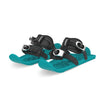

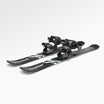



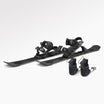






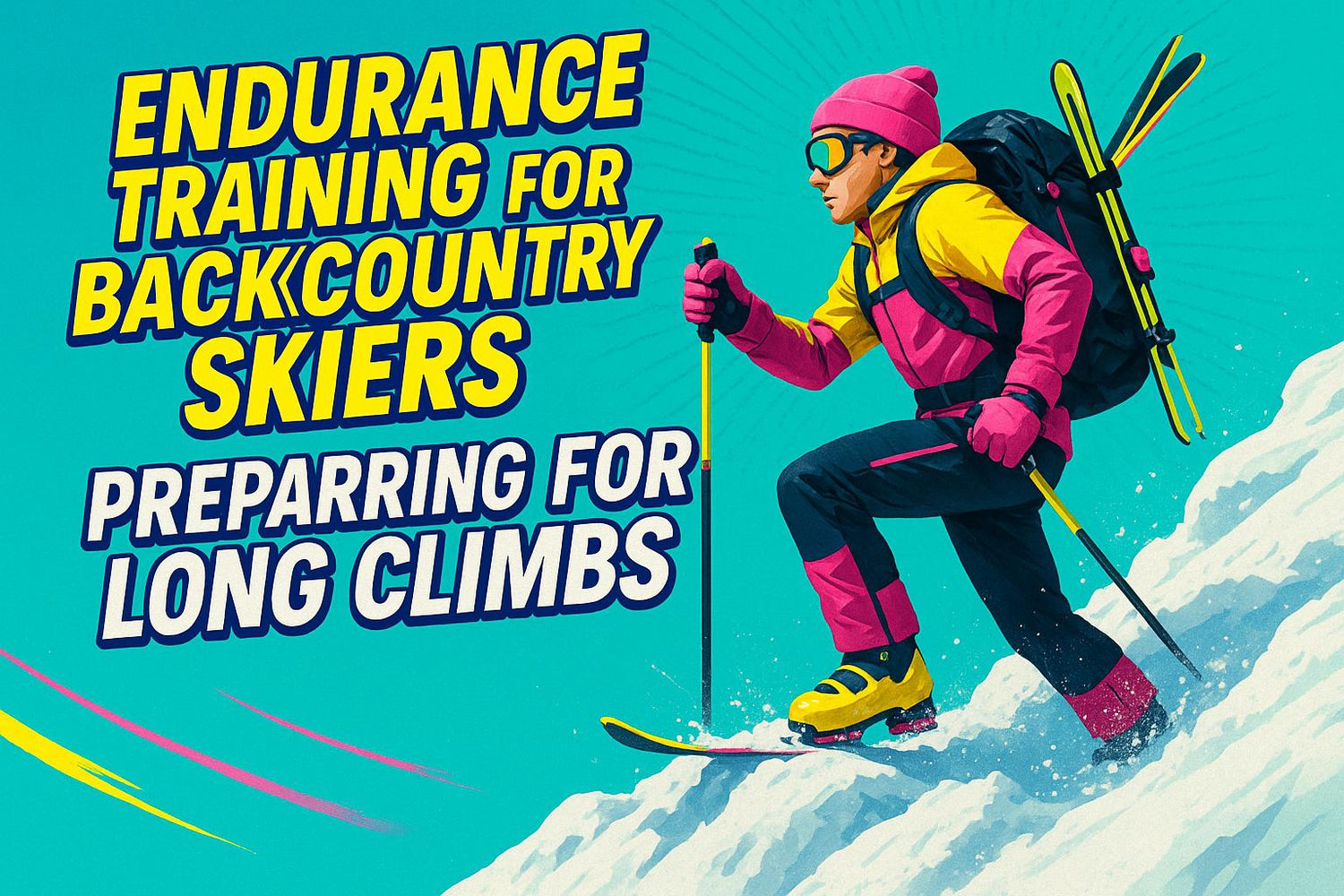
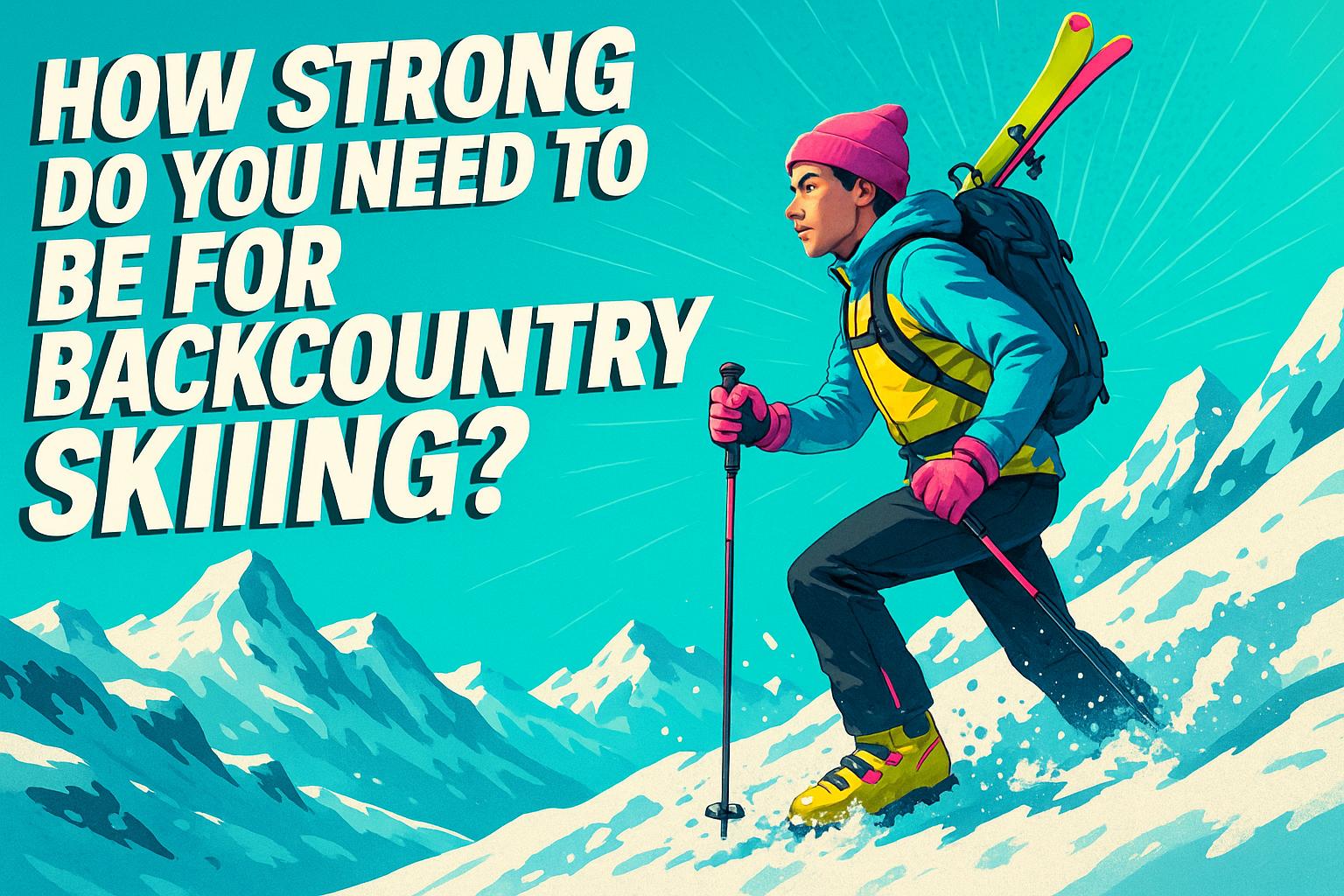


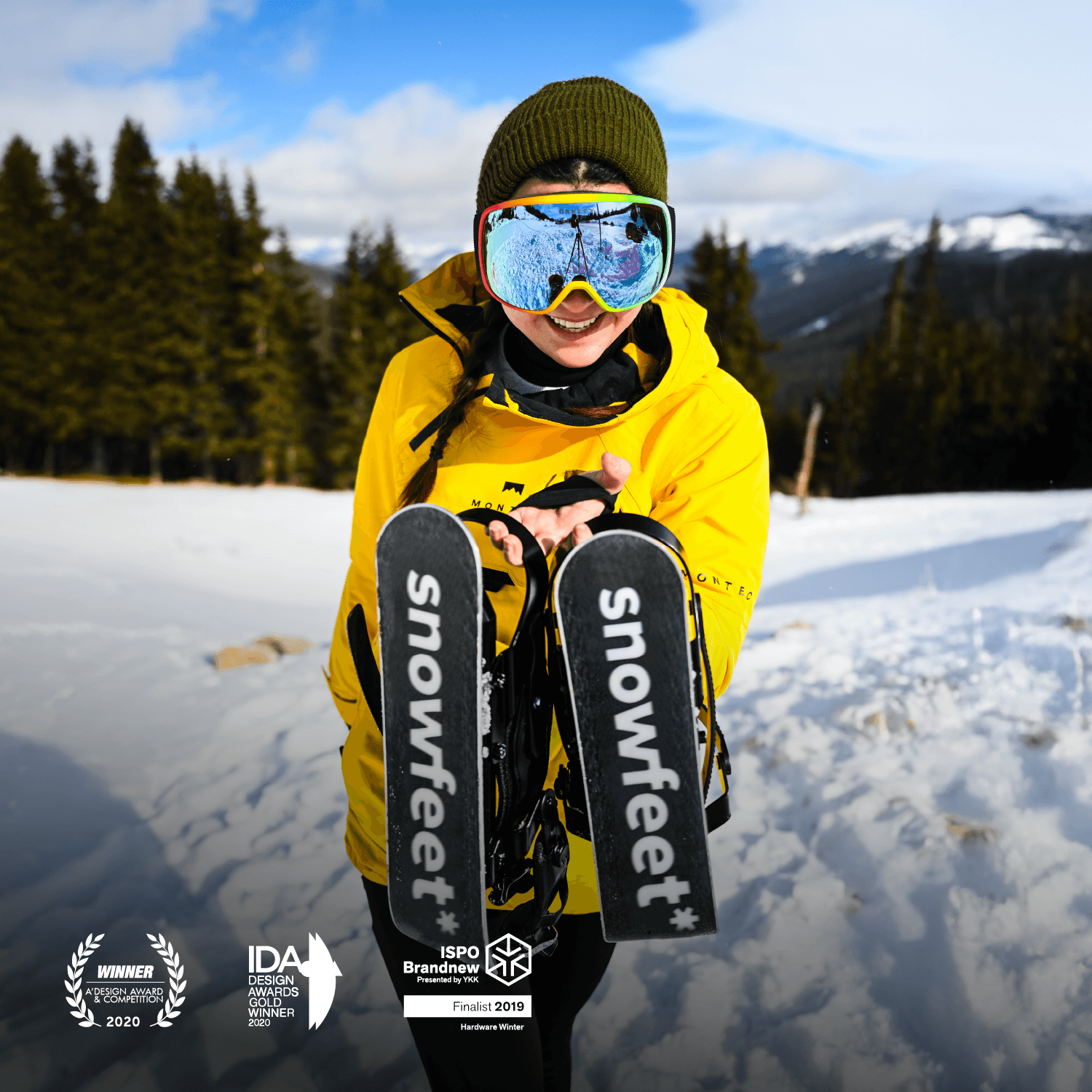

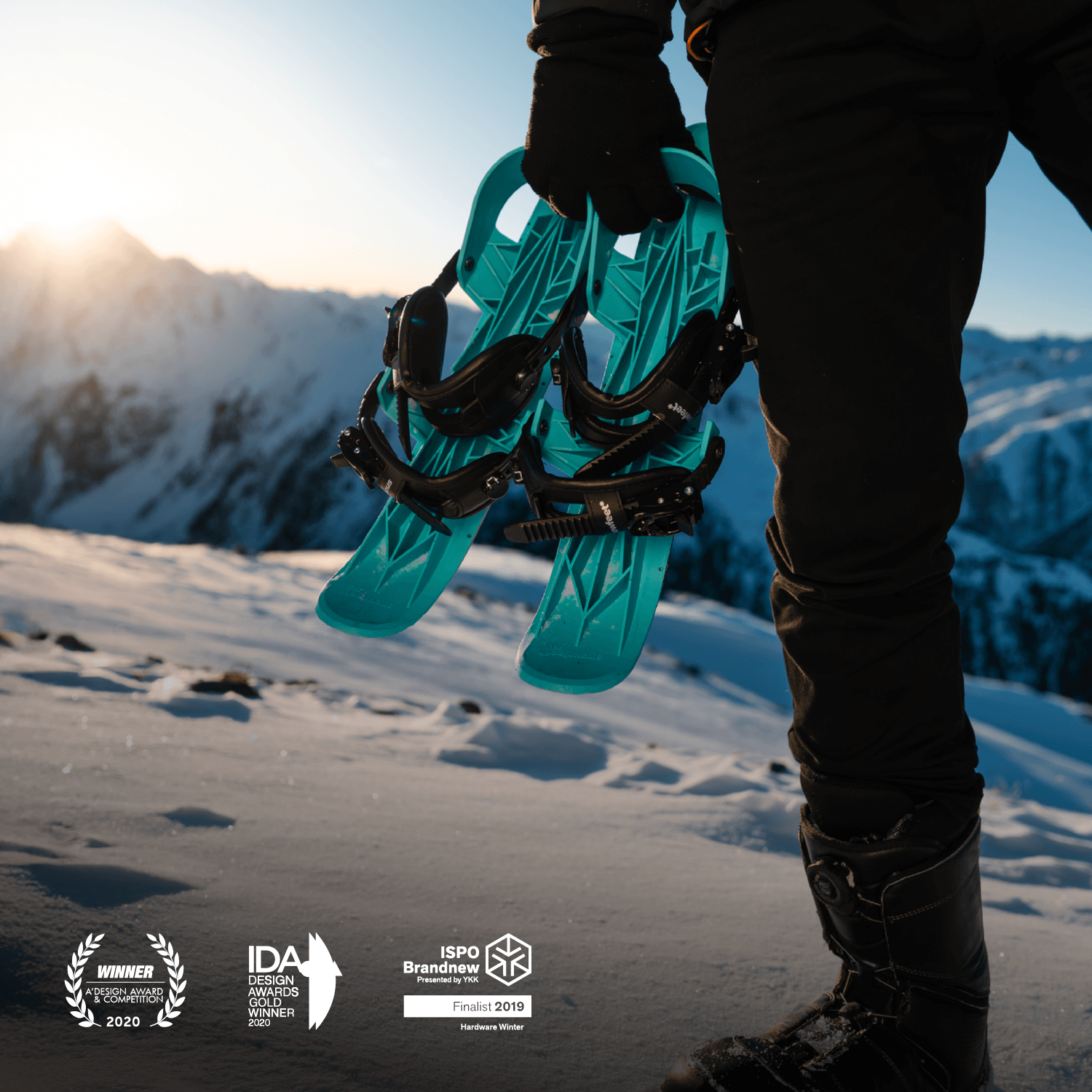
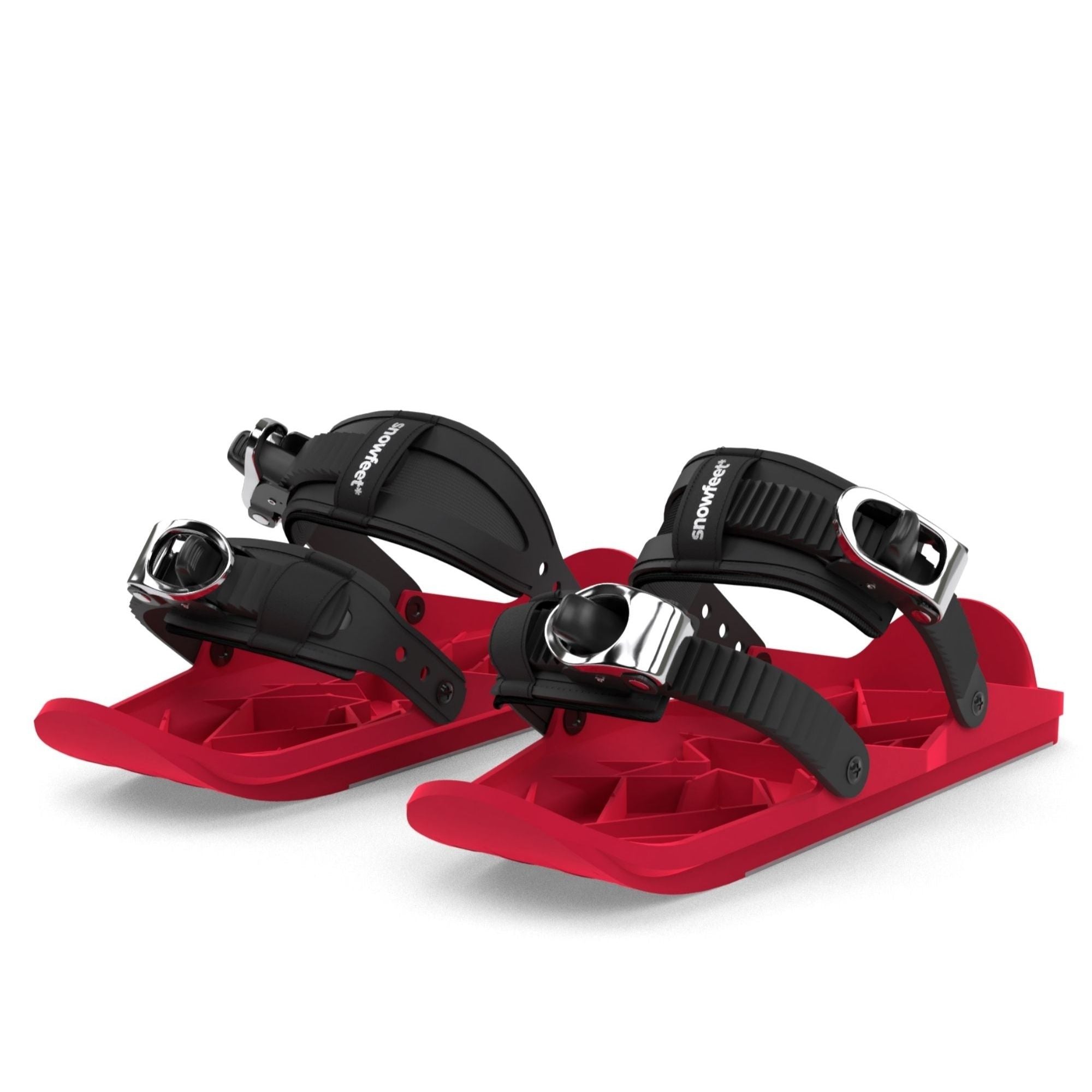



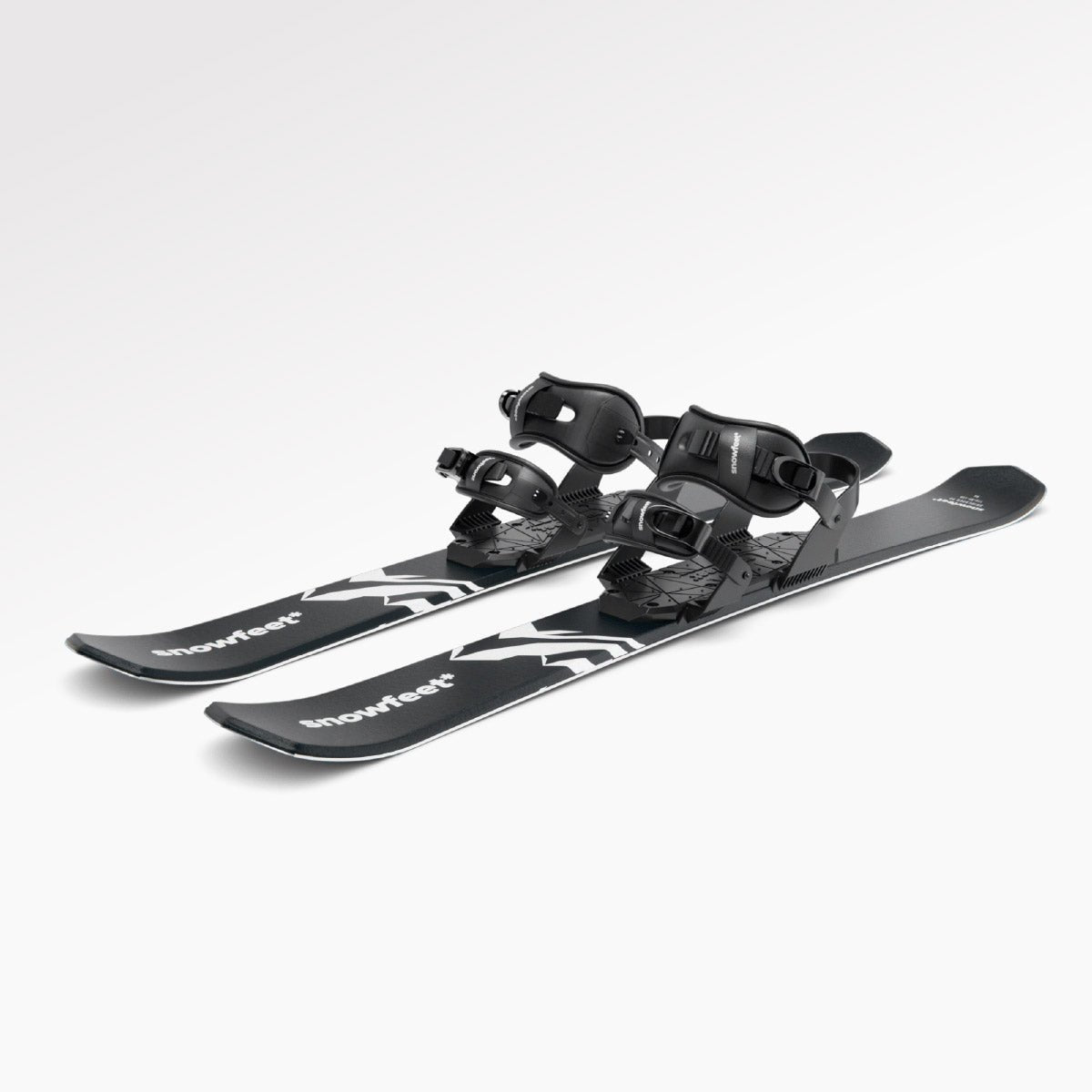
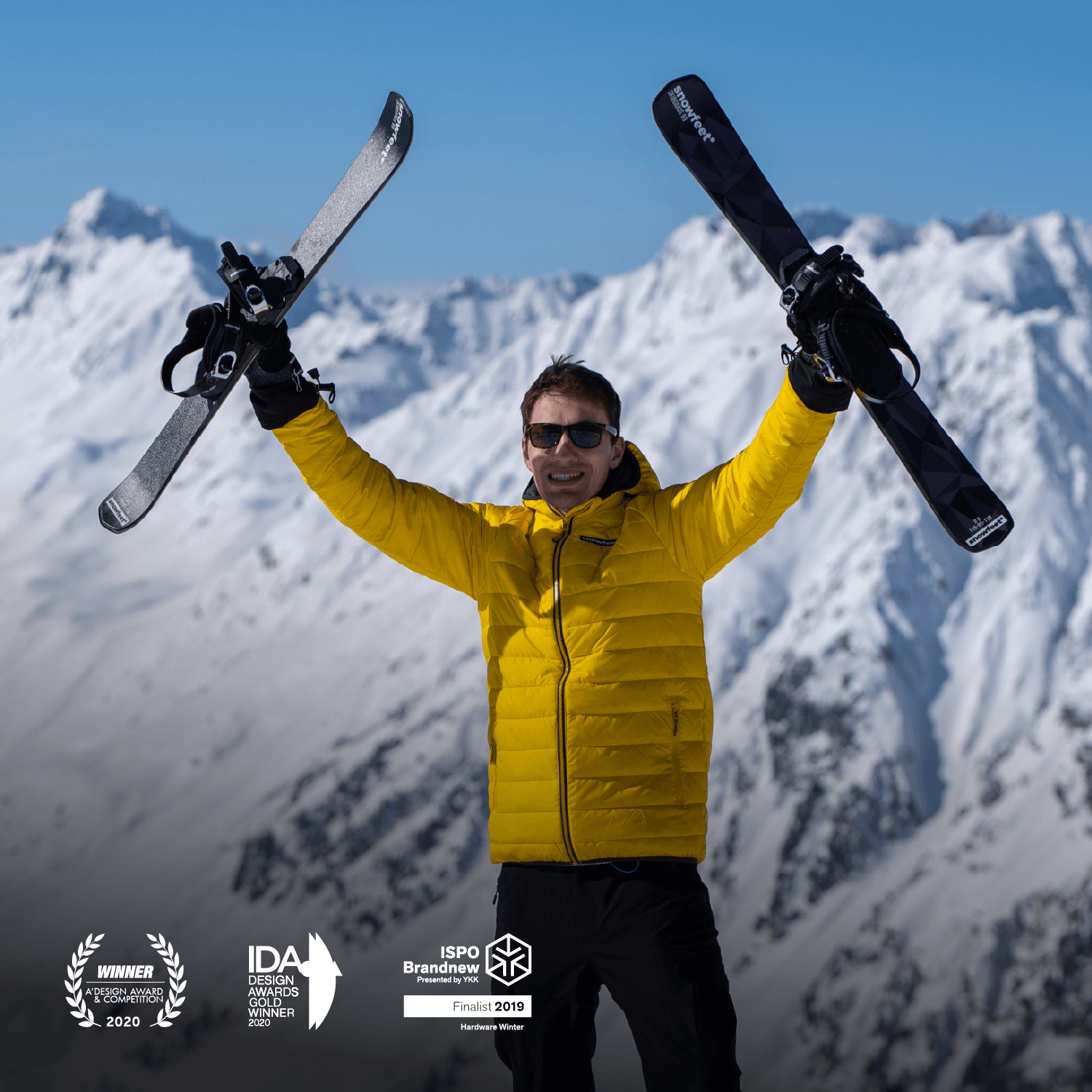
コメントを残す
このサイトはhCaptchaによって保護されており、hCaptchaプライバシーポリシーおよび利用規約が適用されます。